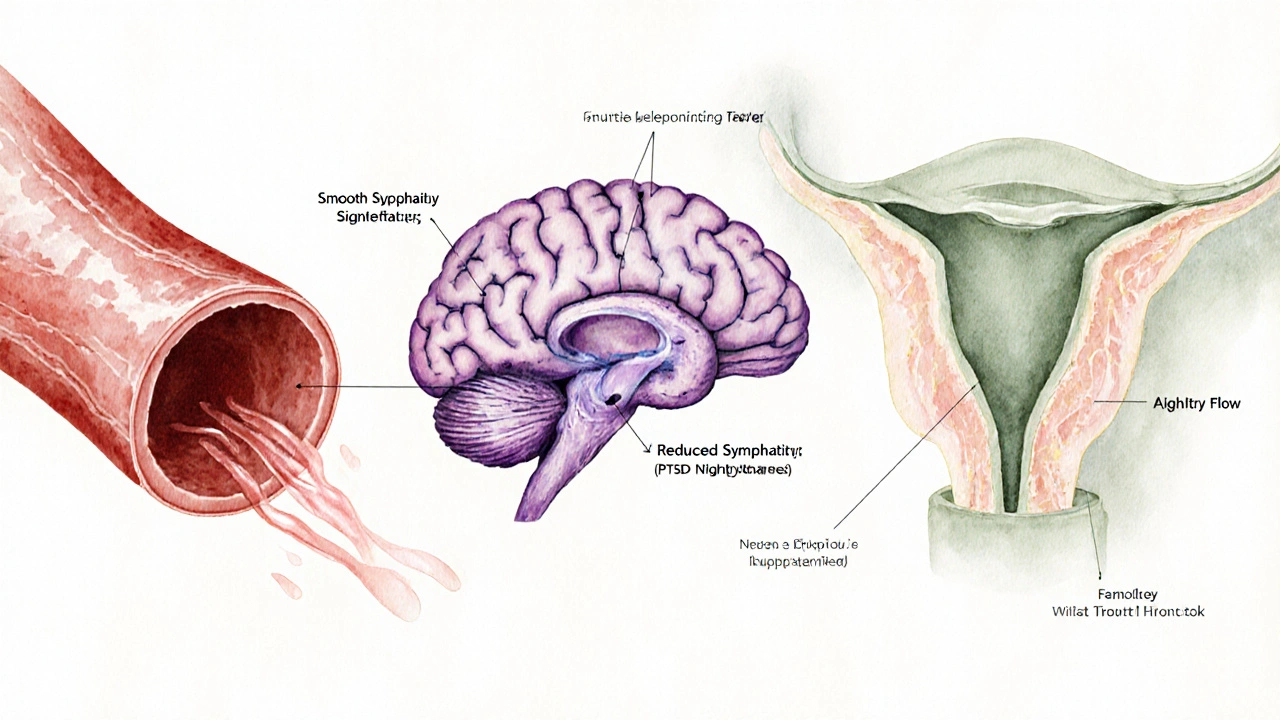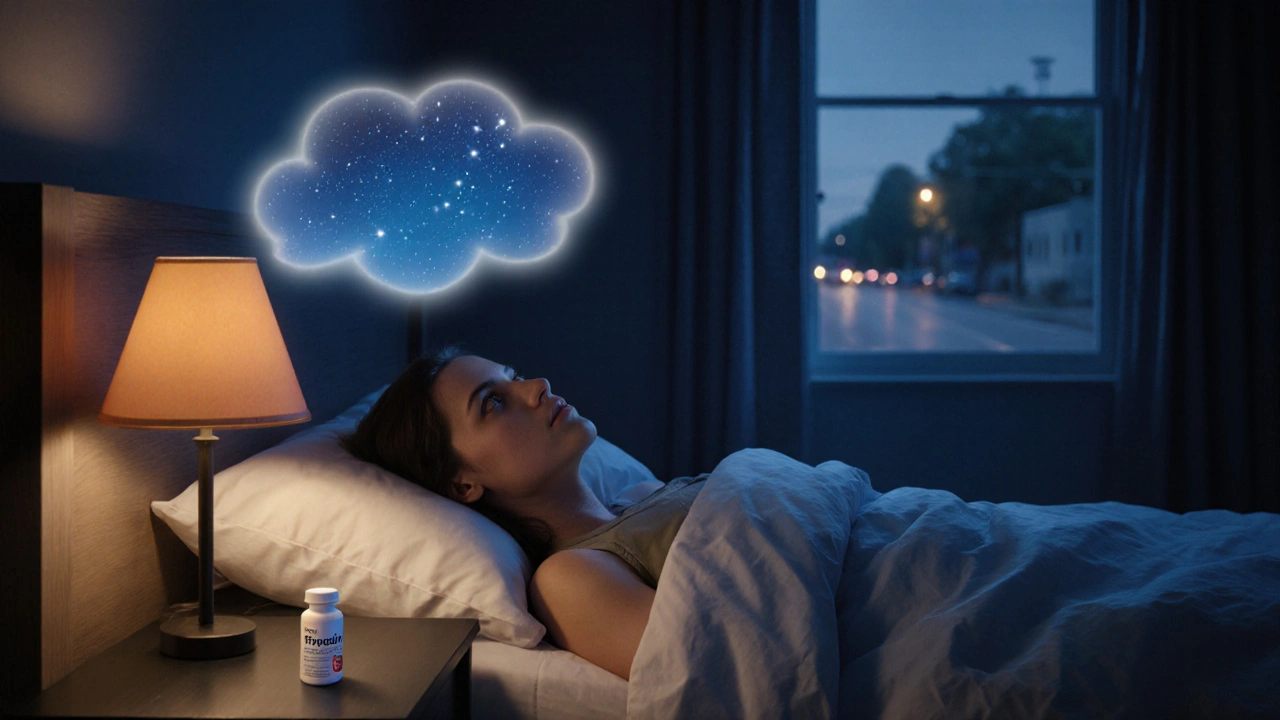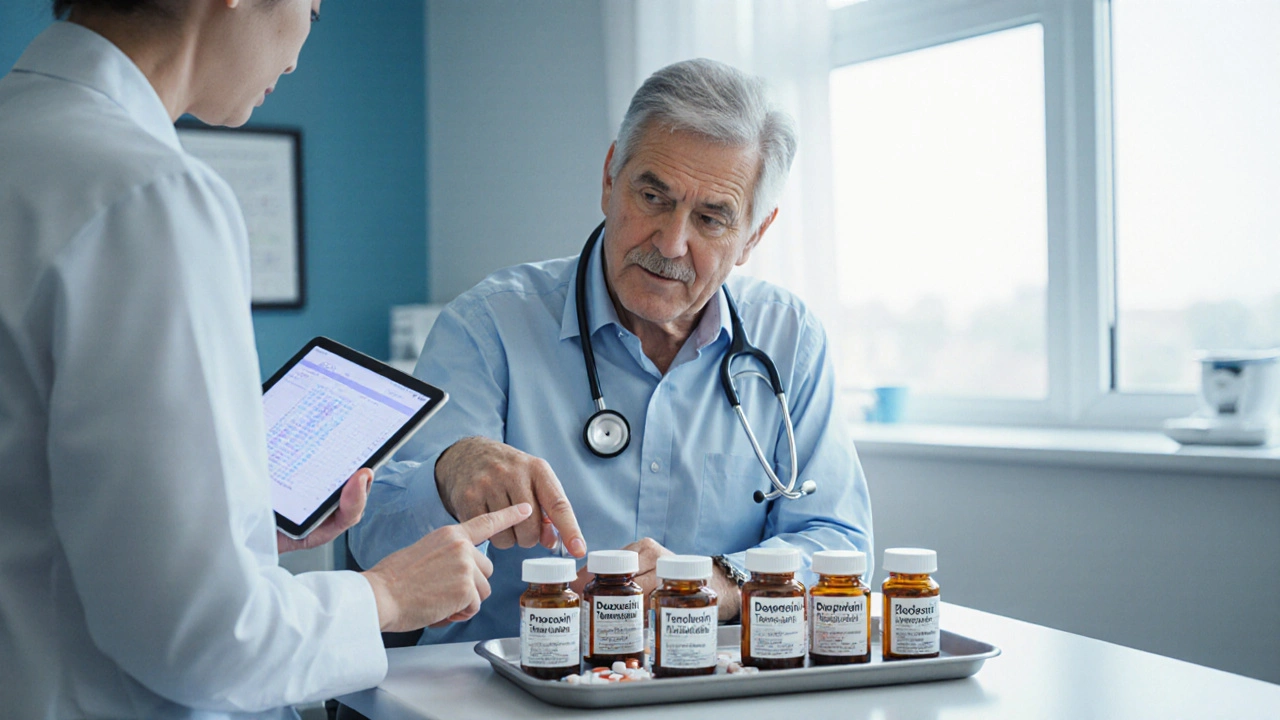Alpha-1 Blocker Selection Tool
Find Your Best Alpha-1 Blocker
Select your primary condition and preferences to see which medication may work best for you
If you’ve been prescribed Prazosin and wonder how it stacks up against other options, you’re not alone. Many patients and clinicians compare it to similar drugs to find the best fit for hypertension, PTSD‑related nightmares, or an enlarged prostate.
What is Prazosin is a selective alpha‑1 adrenergic receptor blocker?
Prazosin belongs to the alpha‑1 blocker class. It was first approved in the 1970s for high blood pressure and later found useful for relieving nightmares in PTSD and relaxing smooth muscle in benign prostatic hyperplasia (BPH).
How does Prazosin work?
- Blocks alpha‑1 receptors on blood vessels → vasodilation → lower blood pressure.
- Reduces sympathetic tone in the brain, helping to dampen trauma‑related flashbacks.
- Relaxes prostate and bladder neck smooth muscle, easing urinary flow obstruction.

Typical prescribing scenarios for Prazosin
Doctors may choose Prazosin for:
- Stage 1-2 essential Hypertension is a chronic condition with persistently high blood pressure, especially when a low‑dose nighttime regimen is desired.
- Post‑traumatic stress disorder (PTSD) with recurrent nightmares - dose titrated up to 15mg at bedtime.
- Benign prostatic hyperplasia (BPH) when other agents cause excessive dizziness.
Primary alternatives to Prazosin
Several other alpha‑1 blockers share similar mechanisms but differ in duration, side‑effect profile, and FDA‑approved uses.
- Doxazosin - longer half‑life, used for hypertension and BPH.
- Terazosin - similar to doxazosin, often started at night for blood pressure control.
- Tamsulosin - highly selective for prostate, minimal blood‑pressure effect.
- Alfuzosin - prostate‑focused, taken after meals.
- Silodosin - newest generation, low cardiovascular impact.
- Non‑alpha blockers such as Clonidine - sometimes added for PTSD nightmares.
Head‑to‑head comparison
| Drug | FDA‑approved uses | Typical dose range | Common side effects | Notable advantage | Approx. monthly cost (USD) |
|---|---|---|---|---|---|
| Prazosin | Hypertension, PTSD nightmares, BPH | 1-5mg nightly (HTN); 1-15mg total daily (PTSD) | Dizziness, headache, first‑dose hypotension | Effective for PTSD sleep disturbances | ≈$15 |
| Doxazosin | Hypertension, BPH | 1-8mg daily | Dizziness, fatigue, edema | Longer half‑life - once‑daily dosing | ≈$30 |
| Terazosin | Hypertension, BPH | 1-10mg nightly | Postural hypotension, nasal congestion | Well‑studied, inexpensive | ≈$25 |
| Tamsulosin | BPH | 0.4mg daily | Retrograde ejaculation, dizziness | Minimal impact on blood pressure | ≈$45 |
| Alfuzosin | BPH | 10mg daily | Headache, abdominal pain | Taken with food - improves adherence | ≈$40 |
| Silodosin | BPH | 8mg daily | Diarrhea, dry mouth | Very low cardiovascular risk | ≈$55 |

Choosing the right alpha‑1 blocker
Consider these three decision points:
- Primary indication. If PTSD nightmares are the main concern, Prazosin remains the only FDA‑approved option. For pure BPH without hypertension, a prostate‑selective agent like Tamsulosin or Silodosin may cause fewer blood‑pressure drops.
- Blood‑pressure profile. Patients with borderline hypotension should avoid drugs with strong systemic vasodilation (Prazosin, Doxazosin). Tamsulosin’s selectivity makes it safer for those on other antihypertensives.
- Cost and insurance coverage. Generic Prazosin and Terazosin are generally the cheapest. Newer agents (Silodosin, Alfuzosin) can be 2-3 times more expensive, which matters for long‑term therapy.
In practice, clinicians often start with a low dose of Prazosin at bedtime to assess tolerance, then add or switch to a longer‑acting blocker if blood‑pressure control is inadequate.
Practical tips and safety considerations
- First‑dose effect. Take the initial dose at night and sit or lie down for 30minutes to reduce the risk of a sudden drop in blood pressure.
- Drug interactions. Combining Prazosin with other antihypertensives (ACE inhibitors, diuretics) can amplify hypotension. Avoid alcohol, which also lowers blood pressure.
- Monitoring. Check blood pressure after the first three doses, then weekly until stable. For PTSD patients, track nightmare frequency with a sleep diary.
- Renal or hepatic impairment. Dose may need reduction in severe kidney disease; most other alpha‑1 blockers have similar adjustments.
- Pregnancy and lactation. Prazosin is Category C; discuss risks with your doctor. Alternatives like Terazosin share similar warnings.
Frequently Asked Questions
Can Prazosin be used alone for PTSD nightmares?
Yes. Clinical guidelines recommend low‑dose Prazosin (1mg at bedtime) as the first‑line pharmacologic treatment for PTSD‑related nightmares. Dose is usually titrated up to 15mg total daily based on response and tolerance.
What makes Tamsulosin different from Prazosin?
Tamsulosin is highly selective for alpha‑1A receptors in the prostate, so it has little effect on blood vessels. Prazosin blocks all alpha‑1 subtypes, leading to systemic blood‑pressure reduction, which is useful for hypertension but can cause dizziness.
Is it safe to switch from Prazosin to Doxazosin?
Switching is possible but should be done under medical supervision. Because Doxazosin has a longer half‑life, the doctor may taper Prazosin over several days while introducing a low dose of Doxazosin to avoid overlapping hypotensive effects.
Do alpha‑1 blockers affect sexual function?
Yes. Drugs that relax prostate smooth muscle can cause retrograde ejaculation or reduced semen volume. Tamsulosin and Silodosin report this side effect most frequently, while Prazosin’s impact is milder.
Which alpha‑1 blocker is cheapest in the United States?
Generic Prazosin and Terazosin are typically the least expensive, often under $20 per month for standard dosing. Prices can vary by pharmacy and insurance plan.


Hi, I'm Caden Lockhart, a pharmaceutical expert with years of experience in the industry. My passion lies in researching and developing new medications, as well as educating others about their proper use and potential side effects. I enjoy writing articles on various diseases, health supplements, and the latest treatment options available. In my free time, I love going on hikes, perusing scientific journals, and capturing the world through my lens. Through my work, I strive to make a positive impact on patients' lives and contribute to the advancement of medical science.